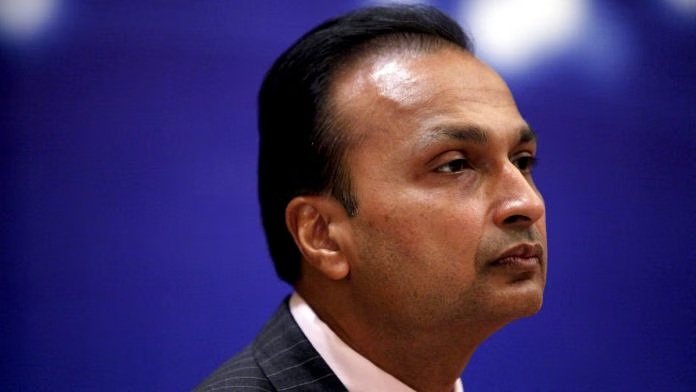This article examines these allegations, critiques of government inaction, and the broader context, drawing on recent developments and relevant references.
Anil Ambani, once hailed as one of India’s most prominent industrialists and the chairman of the Reliance Anil Dhirubhai Ambani Group (ADAG), has faced significant financial and legal challenges in recent years. His business empire, which once spanned telecom, power, infrastructure, and financial services, has been plagued by mounting debts, defaults, and allegations of financial misconduct. The narrative surrounding Ambani’s downfall has fueled speculation that there may be a concerted effort to “destroy” him, coupled with accusations that the Indian government has failed to effectively act against loan defaulters.
Anil Ambani’s Financial Struggles and Allegations of a Targeted Campaign
Anil Ambani’s financial troubles began to surface prominently after the 2005 split of the Reliance Group between him and his elder brother, Mukesh Ambani. While Mukesh’s Reliance Industries flourished, Anil’s ventures, including Reliance Communications (RCom), Reliance Infrastructure, and Reliance Home Finance (RHFL), struggled under the weight of massive debts. By 2020, Ambani declared bankruptcy in a UK court, claiming his net worth was effectively zero after accounting for liabilities, a stark contrast to his earlier status as one of the world’s richest individuals.
Recent developments have intensified scrutiny on Ambani. In July 2025, the Enforcement Directorate (ED) conducted raids on over 35 premises linked to Reliance Group companies, investigating an alleged Rs. 3,000 crore loan fraud and money laundering case involving Yes Bank loans disbursed between 2017 and 2019. The ED alleged a “well-planned scheme” to siphon off public money through loan diversions, backdated credit approvals, and potential bribery involving Yes Bank promoters. Additionally, the State Bank of India (SBI) classified RCom’s loan account as fraudulent, reporting Ambani to the Reserve Bank of India (RBI) for a Rs. 3,000 crore exposure. These actions have led some to speculate that Ambani is being systematically targeted, with social media posts on X suggesting a deliberate effort to “destroy” him.
The narrative of a targeted campaign gained traction due to the timing and intensity of regulatory actions. For instance, in August 2024, the Securities and Exchange Board of India (SEBI) banned Ambani from the securities market for five years and imposed a Rs. 25 crore fine for alleged fund diversion from RHFL. Critics argue that the scale and coordination of these probes, involving multiple agencies like the ED, SEBI, and CBI, suggest a concerted effort to dismantle Ambani’s remaining business interests. Posts on X have further fueled this sentiment, with some users claiming that Ambani’s prominence and surname make him a high-profile target, while others argue that the government’s actions reflect a broader anti-corruption stance.
However, Reliance Group companies, including Reliance Power and Reliance Infrastructure, have maintained that these investigations pertain to legacy issues involving RCom and RHFL, which are no longer part of the group. They assert that the loans were sanctioned following due process and were fully secured, with no impact on their current operations. Ambani’s supporters argue that the ongoing legal battles, including those with Chinese banks over a Rs. 5,000 crore debt, are being exaggerated to tarnish his reputation.

***
Govt. Inaction on Loan Defaulters: A Broader Criticism
The allegations against Anil Ambani are set against a backdrop of widespread criticism that the Indian government has been ineffective in addressing loan defaulters, particularly high-profile industrialists. Public sector banks (PSBs) have faced significant challenges with non-performing assets (NPAs), with bad loans amounting to billions of rupees. A 2020 report highlighted that Yes Bank alone had Rs.34,000 crore in NPAs, including Rs. 12,800 crore linked to Anil Ambani’s group. Critics, including opposition leaders like Rahul Gandhi, have accused the government of leniency toward corporate defaulters while ordinary borrowers face severe consequences for smaller loans.
The concept of regulatory forbearance, where banks are allowed to restructure loans without classifying them as NPAs, has been a particular point of contention. A 2024 study by the Indian School of Business noted that forbearance incentivizes banks to delay recognizing bad loans, exacerbating the NPA crisis. The case of RCom, where SBI classified a Rs. 3,000 crore loan as fraudulent only after years of insolvency proceedings, underscores this issue. Similarly, Canara Bank’s withdrawal of a fraud classification against Ambani’s firm in July 2025, after a Bombay High Court challenge, raised questions about the consistency of regulatory actions.
Social media sentiment, particularly on X, reflects public frustration with perceived inequities. Posts have highlighted that while small borrowers face harassment for defaulting on loans as low as Rs.50,000, high-profile defaulters like Ambani appear to face fewer immediate consequences, such as arrests or property seizures. Critics argue that the government’s focus on high-profile cases like Ambani’s may be politically motivated to deflect from broader systemic failures in addressing the NPA crisis. For instance, the “Dirty Dozen” report in 2016 identified 12 companies responsible for 25% of India’s NPAs, yet recovery efforts have been slow, with significant haircuts accepted by lenders.
***
Anil Ambani’s Revival Efforts and the Role of His Sons
Despite these challenges, Ambani’s business empire has shown signs of revival, largely credited to his sons, Jai Anmol and Jai Anshul Ambani. Since 2024, Reliance Power and Reliance Infrastructure have significantly reduced their debts, with Reliance Infrastructure cutting its standalone debt from Rs. 3,831 crore to Rs. 475 crore and Reliance Power becoming debt-free. These efforts included raising Rs.4,500 crore through preferential equity issuance, Rs.7,100 crore via foreign currency convertible bonds, and Rs.6,000 crore through qualified institutional placements. The group also secured new contracts, such as a Rs. 2,000 crore solar project in Bhutan and a defence partnership with Germany’s Rheinmetall.
Jai Anmol Ambani, in particular, has been instrumental in these efforts, taking leadership roles in Reliance Capital and driving stake increases with partners like Nippon. However, his tenure has not been without controversy, as SEBI fined him Rs. 1 crore in September 2024 for approving unauthorized loans worth Rs. 40 crore. Despite these setbacks, market confidence in the group has improved, with Reliance Infrastructure’s stock rising 101% in a year and Reliance Power’s market cap reaching Rs. 16,614 crore.
Analysis: Is There a Plan to Destroy Anil Ambani?
The narrative of a deliberate plan to “destroy” Anil Ambani is contentious. On one hand, the scale of regulatory actions—ED raids, SEBI bans, and fraud classifications—suggests intense scrutiny that some interpret as targeted. The involvement of multiple agencies and the timing of these actions, especially after Ambani’s attempts at financial recovery, fuel speculation of a coordinated effort. Historical allegations, such as those linking Ambani to the Rafale deal controversy in 2018, also contribute to perceptions of political targeting, though these were largely debunked as Reliance Defence was a minor beneficiary.
On the other hand, Ambani’s financial troubles are rooted in verifiable business failures. RCom’s Rs. 43,000 crore debt and subsequent insolvency, coupled with RHFL’s dramatic increase in corporate loans from Rs. 3,742.60 crore to Rs. 8,670.80 crore between 2017 and 2019, indicate systemic issues within his companies. The ED’s findings of backdated approvals and loan diversions, supported by CBI FIRs and inputs from SEBI and other agencies, suggest genuine concerns about financial misconduct. Moreover, Ambani’s declaration of bankruptcy and failure to disclose personal guarantees to Chinese lenders eroded trust among creditors and regulators.
The government’s broader failure to recover bad loans is a systemic issue rather than one specific to Ambani. The Yes Bank crisis, where Rs. 34,000 crore in loans turned into NPAs, involved multiple defaulters, including Essel Group and DHFL. The slow pace of recovery, with significant haircuts (e.g., 83% for Reliance Naval and 63% for Reliance Capital), reflects challenges in India’s insolvency framework rather than a targeted vendetta. Posts on X praising the government’s “zero-tolerance” policy against corruption suggest that Ambani’s case is part of a larger crackdown, though others argue it disproportionately spares influential figures.
(India CSR)





